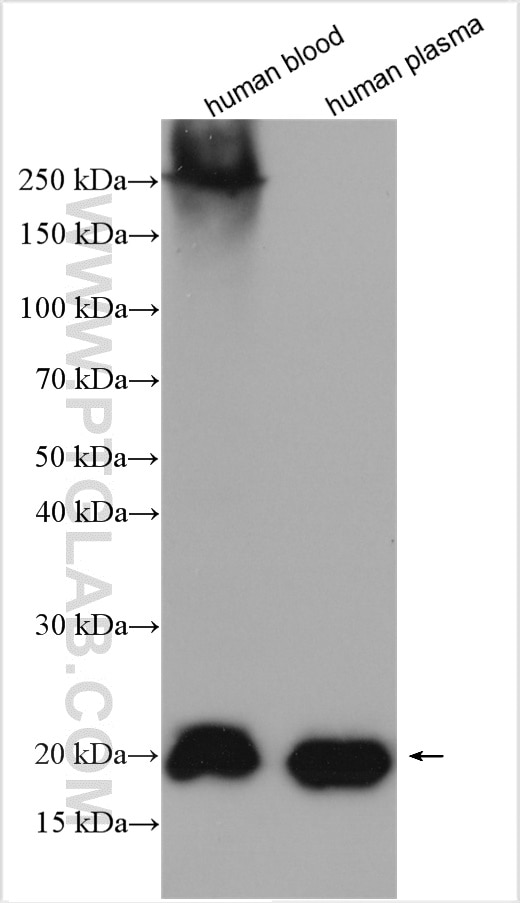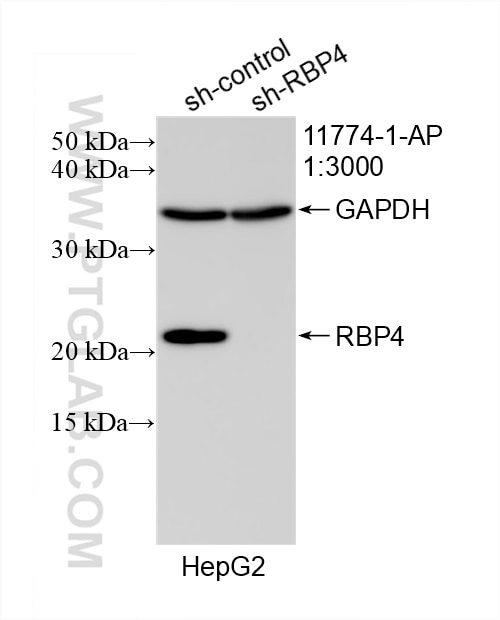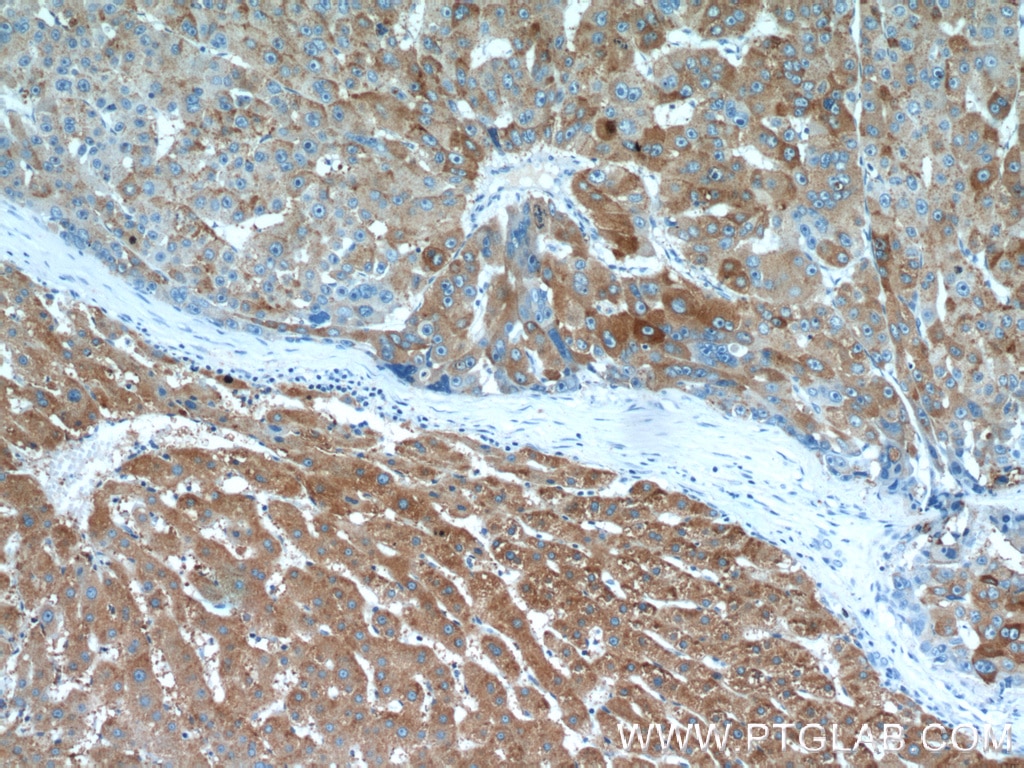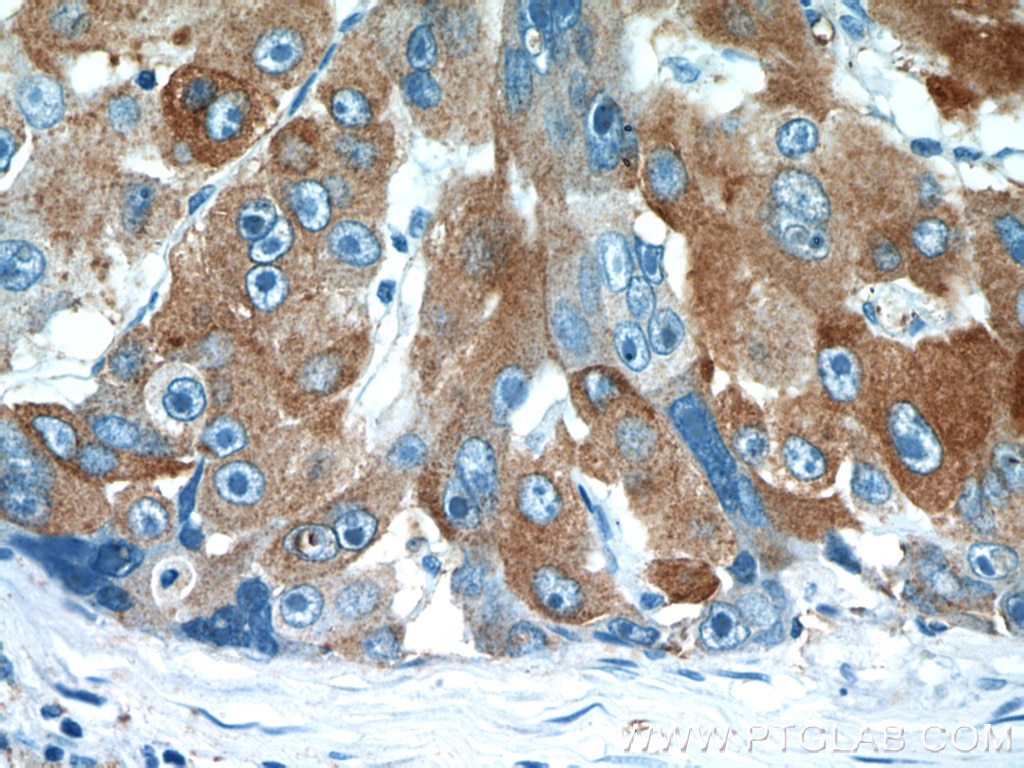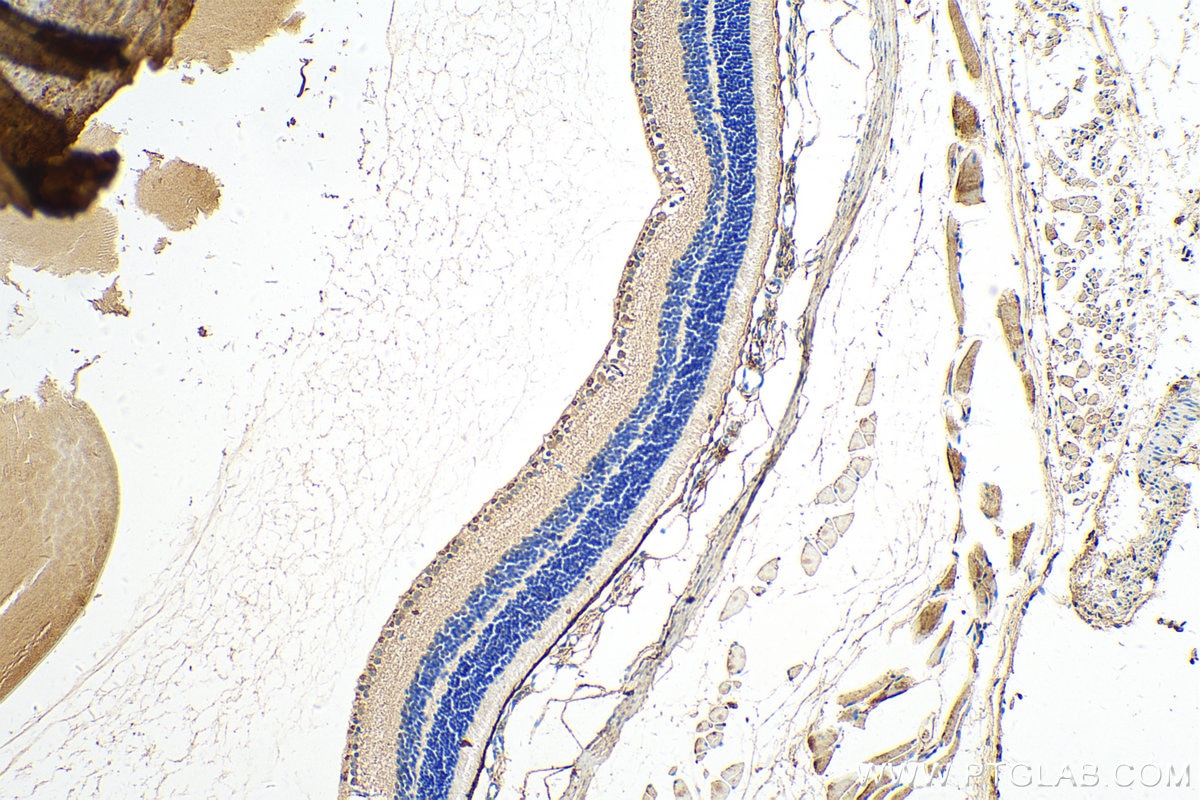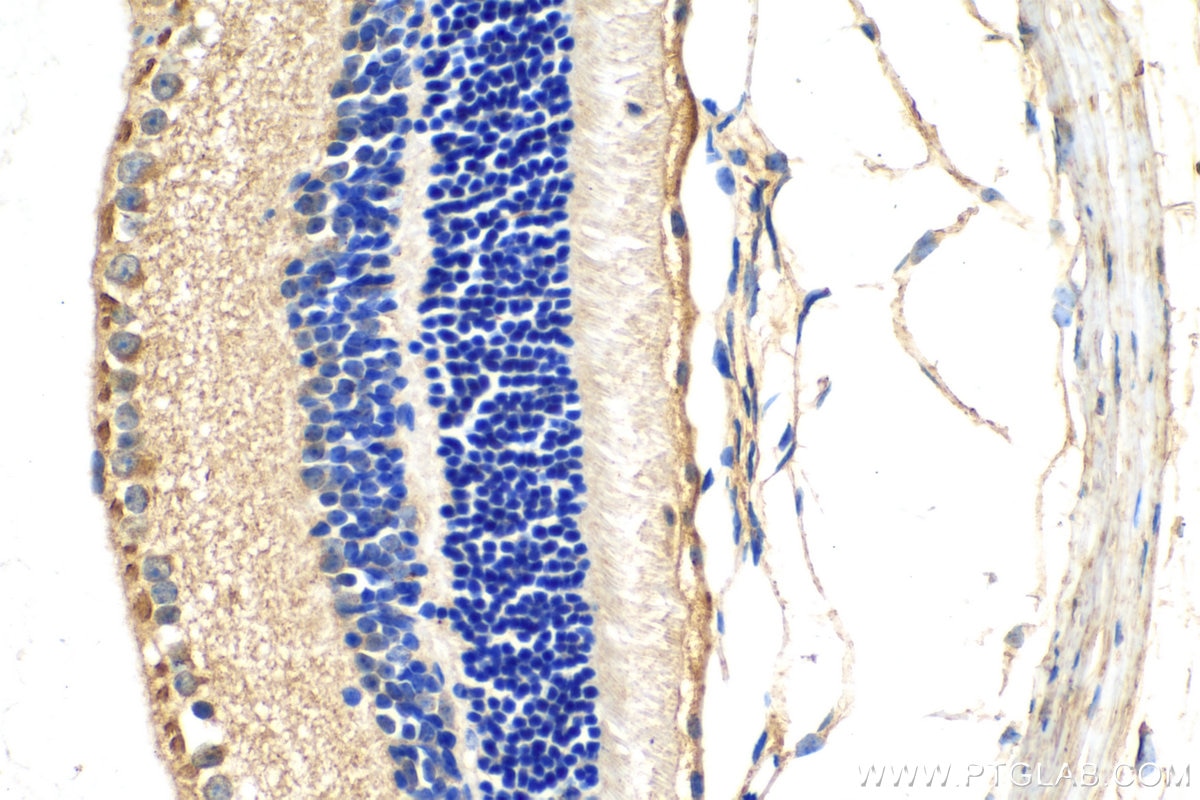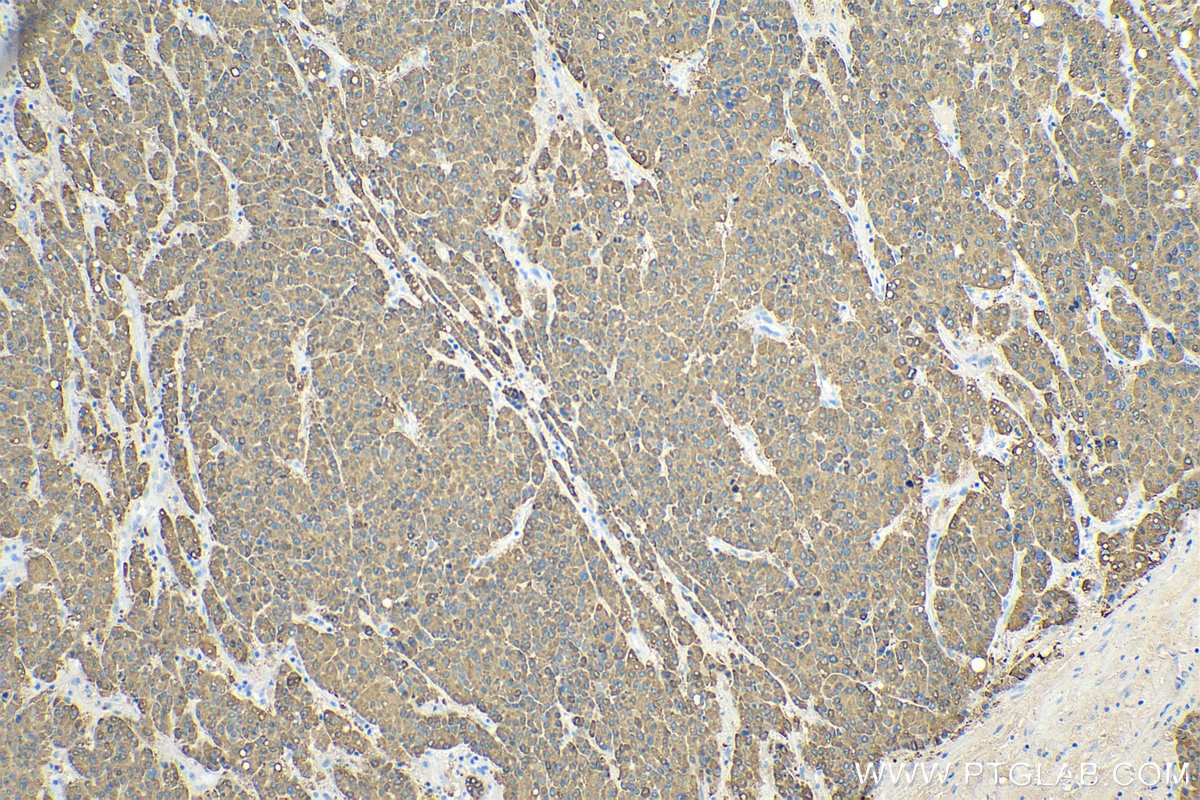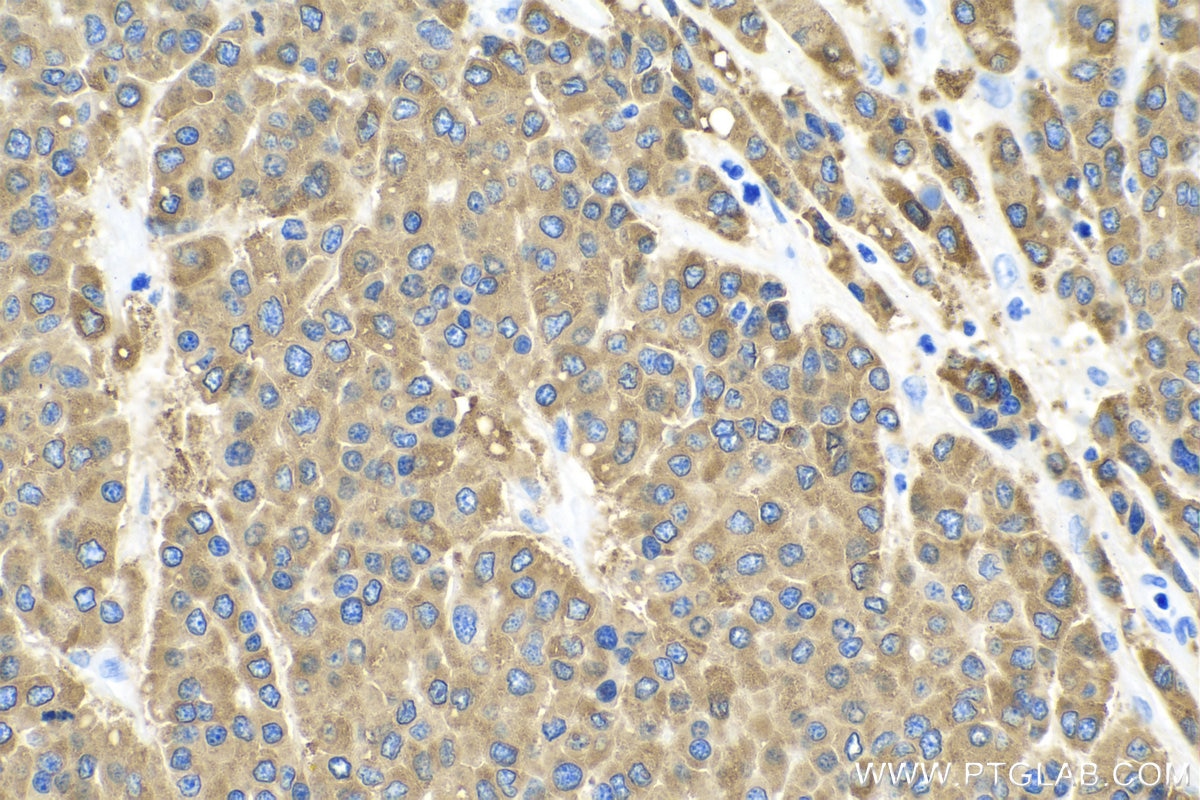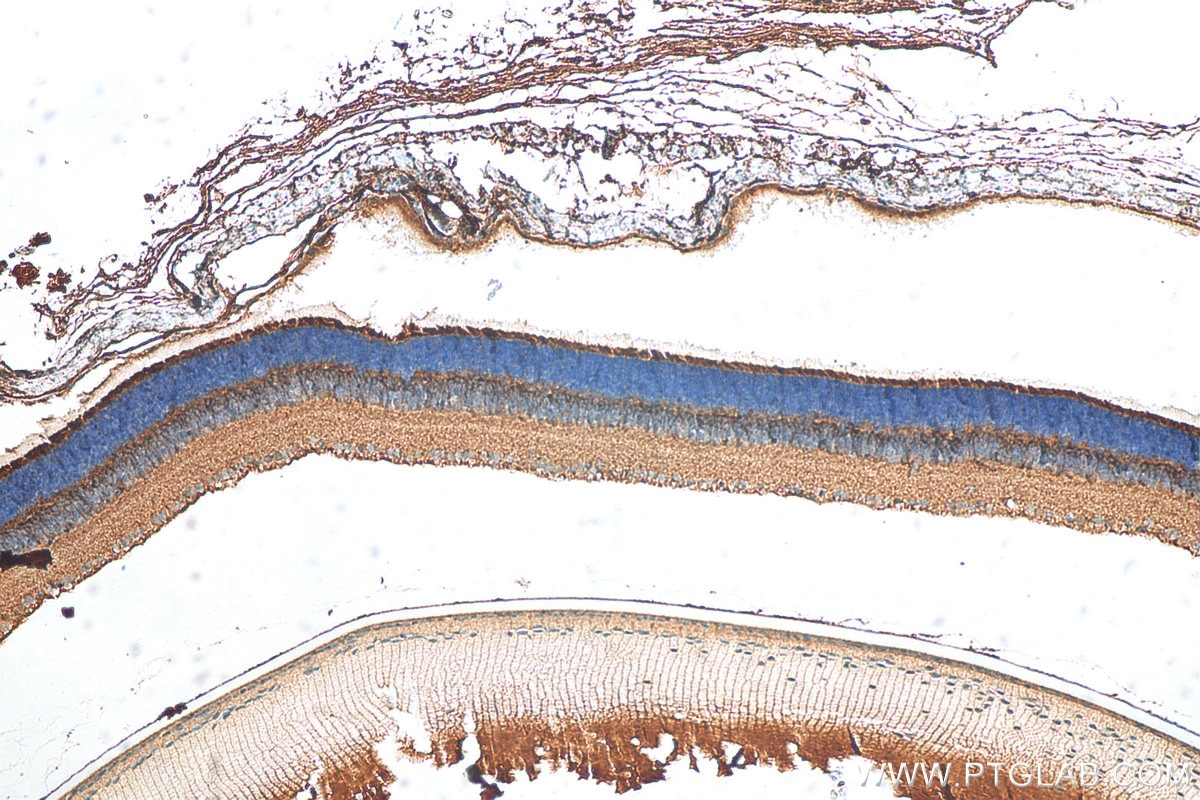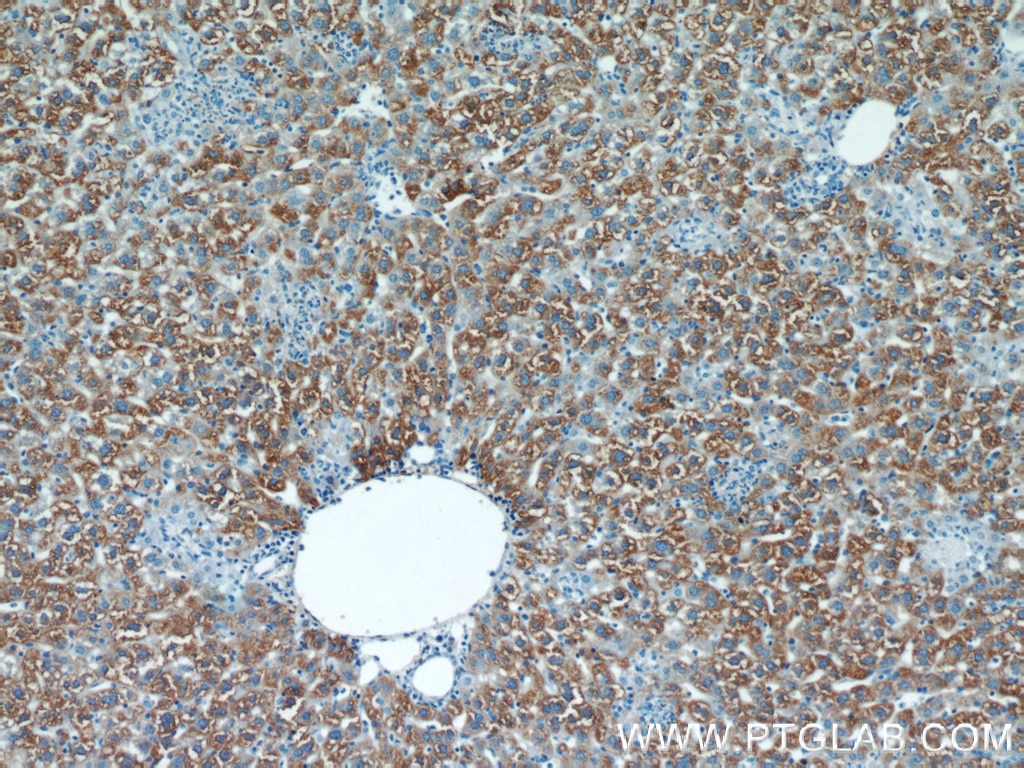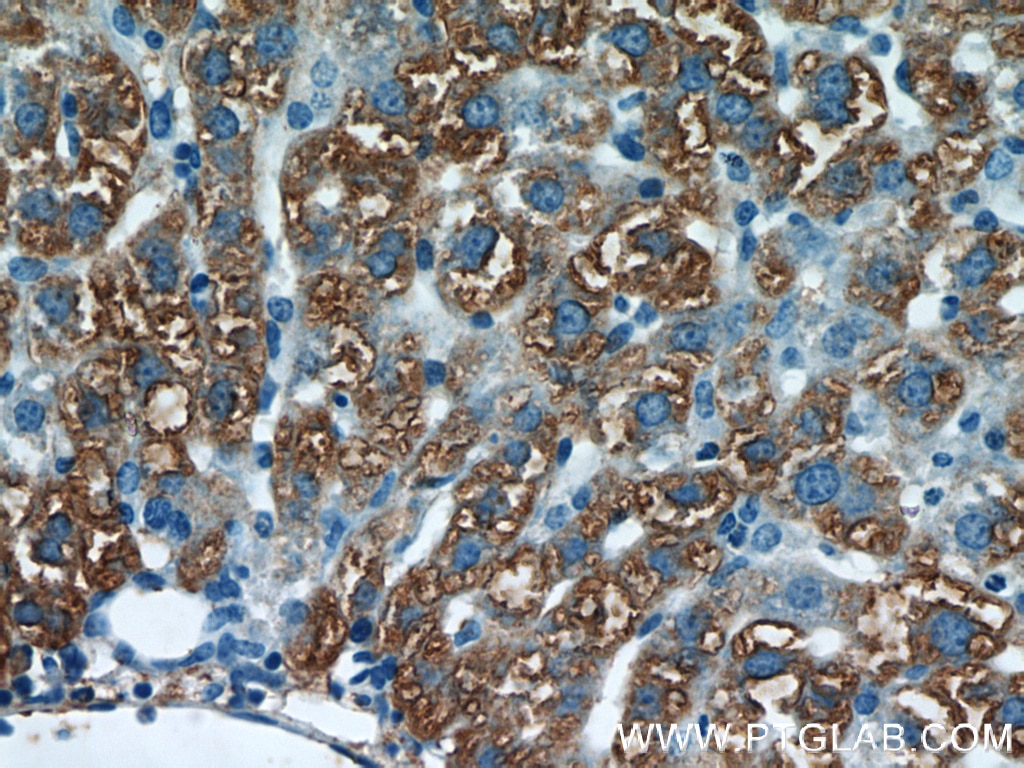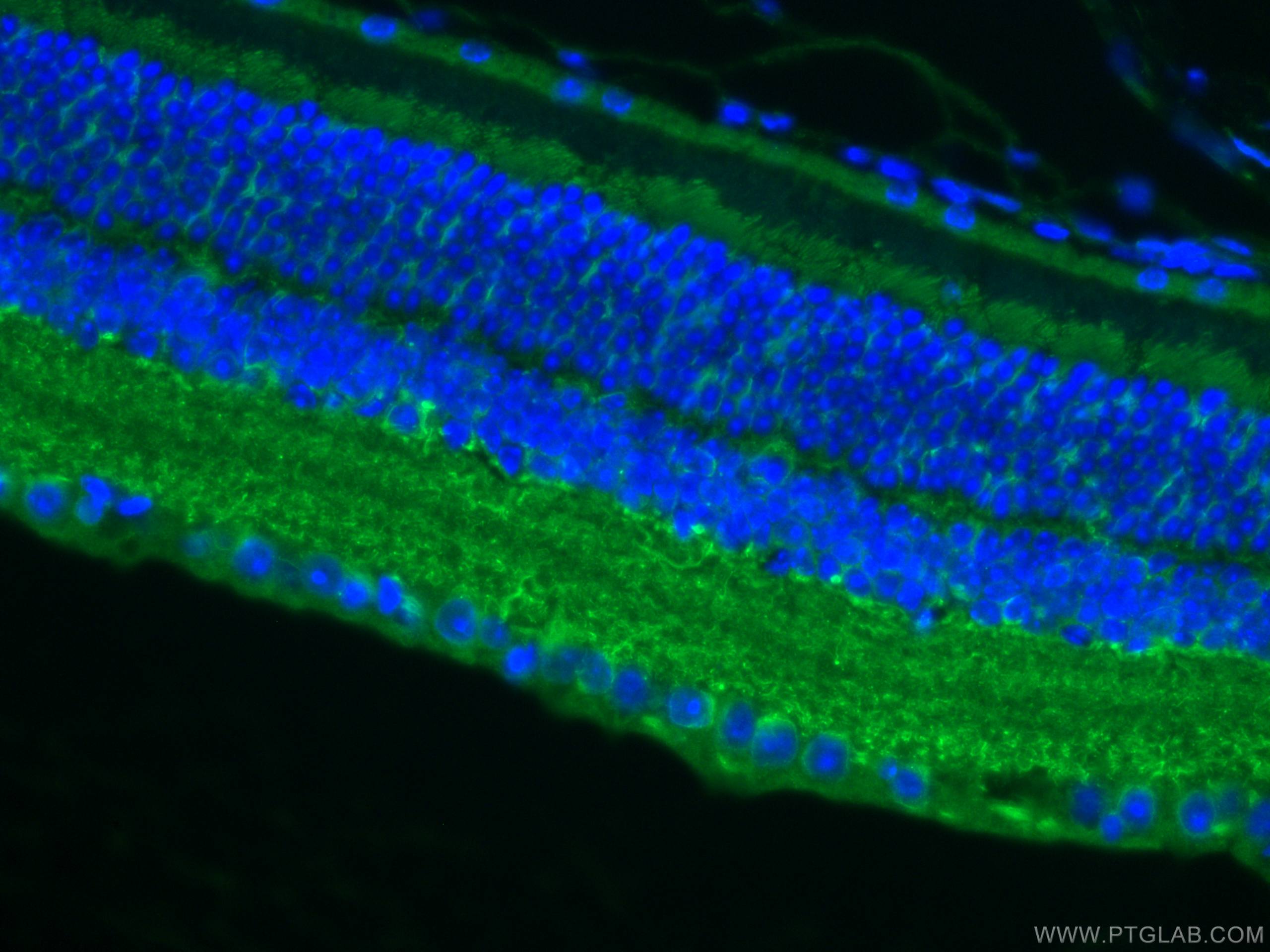- Featured Product
- KD/KO Validated
RBP4 Polyklonaler Antikörper
RBP4 Polyklonal Antikörper für WB, IHC, IF-P, ELISA
Wirt / Isotyp
Kaninchen / IgG
Getestete Reaktivität
human, Maus, Ratte und mehr (1)
Anwendung
WB, IHC, IF-P, CoIP, ELISA
Konjugation
Unkonjugiert
Kat-Nr. : 11774-1-AP
Synonyme
Geprüfte Anwendungen
| Erfolgreiche Detektion in WB | human blood, HepG2-Zellen |
| Erfolgreiche Detektion in IHC | Maus-Augengewebe, humanes Leberkarzinomgewebe, Mauslebergewebe Hinweis: Antigendemaskierung mit TE-Puffer pH 9,0 empfohlen. (*) Wahlweise kann die Antigendemaskierung auch mit Citratpuffer pH 6,0 erfolgen. |
| Erfolgreiche Detektion in IF-P | Maus-Augengewebe |
Empfohlene Verdünnung
| Anwendung | Verdünnung |
|---|---|
| Western Blot (WB) | WB : 1:1000-1:6000 |
| Immunhistochemie (IHC) | IHC : 1:250-1:1000 |
| Immunfluoreszenz (IF)-P | IF-P : 1:50-1:500 |
| It is recommended that this reagent should be titrated in each testing system to obtain optimal results. | |
| Sample-dependent, check data in validation data gallery | |
Veröffentlichte Anwendungen
| KD/KO | See 3 publications below |
| WB | See 18 publications below |
| IHC | See 7 publications below |
| IF | See 4 publications below |
| CoIP | See 1 publications below |
Produktinformation
11774-1-AP bindet in WB, IHC, IF-P, CoIP, ELISA RBP4 und zeigt Reaktivität mit human, Maus, Ratten
| Getestete Reaktivität | human, Maus, Ratte |
| In Publikationen genannte Reaktivität | human, Gänse, Maus, Ratte |
| Wirt / Isotyp | Kaninchen / IgG |
| Klonalität | Polyklonal |
| Typ | Antikörper |
| Immunogen | RBP4 fusion protein Ag2448 |
| Vollständiger Name | retinol binding protein 4, plasma |
| Berechnetes Molekulargewicht | 201 aa, 23 kDa |
| Beobachtetes Molekulargewicht | 23 kDa |
| GenBank-Zugangsnummer | BC020633 |
| Gene symbol | RBP4 |
| Gene ID (NCBI) | 5950 |
| Konjugation | Unkonjugiert |
| Form | Liquid |
| Reinigungsmethode | Antigen-Affinitätsreinigung |
| Lagerungspuffer | PBS with 0.02% sodium azide and 50% glycerol |
| Lagerungsbedingungen | Bei -20°C lagern. Nach dem Versand ein Jahr lang stabil Aliquotieren ist bei -20oC Lagerung nicht notwendig. 20ul Größen enthalten 0,1% BSA. |
Hintergrundinformationen
RBP4 (retinol-binding protein 4) is a carrier protein that transports vitamin A (retinol) from the liver to the peripheral tissues. Synthesized primarily by hepatocytes and adipocytes as a 21 kDa non-glycosylated protein, RBP4 is secreted into the circulation as a retinol-RBP4 complex. In plasma the RBP4-retinol complex is bound to transthyretin (TRR), which prevents kidney filtration. Two truncated forms of RBP4, RBP4-L (truncated at Leu-183) and RBP4-LL (truncated at Leu-182 and Leu-183), exist by proteolytic process. RBP4-L and RBP4-LL, which do not bind TTR, are normally excreted into the urine but accumulate in the serum during renal failure. Urinary RBP4 has been reported as marker for glomerular disease. RBP4 also was identified as an adipokine that elevated in some INS-resistant states. Measurement of serum RBP4 could be used to assess the risk of INS resistance, type 2 diabetes, obesity, and cardiovascular disease. (18752671, 16034410)
Protokolle
| PRODUKTSPEZIFISCHE PROTOKOLLE | |
|---|---|
| WB protocol for RBP4 antibody 11774-1-AP | Protokoll herunterladen |
| IHC protocol for RBP4 antibody 11774-1-AP | Protokoll herunterladenl |
| IF protocol for RBP4 antibody 11774-1-AP | Protokoll herunterladen |
| STANDARD-PROTOKOLLE | |
|---|---|
| Klicken Sie hier, um unsere Standardprotokolle anzuzeigen |
Publikationen
| Species | Application | Title |
|---|---|---|
J Neuroinflammation Succinate-induced macrophage polarization and RBP4 secretion promote vascular sprouting in ocular neovascularization | ||
Bioact Mater Bio-inspired chiral self-assemblies promoted neuronal differentiation of retinal progenitor cells through activation of metabolic pathway. | ||
Theranostics Growth hormone receptor disrupts glucose homeostasis via promoting and stabilizing retinol binding protein 4. | ||
Metabolism Disruption of retinoid homeostasis induces RBP4 overproduction in diabetes: O-GlcNAcylation involved. | ||
Virulence Altering retinol binding protein 4 levels in hepatitis C: Inflammation and steatosis matter. |
Rezensionen
The reviews below have been submitted by verified Proteintech customers who received an incentive for providing their feedback.
FH Azita (Verified Customer) (05-31-2021) | Human spinal cord (cervical) tissue In 1/100 dilution gave fade labelling
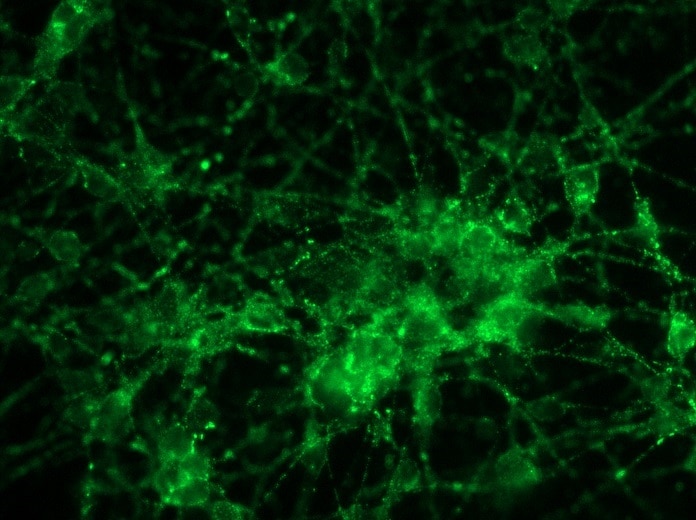 |
